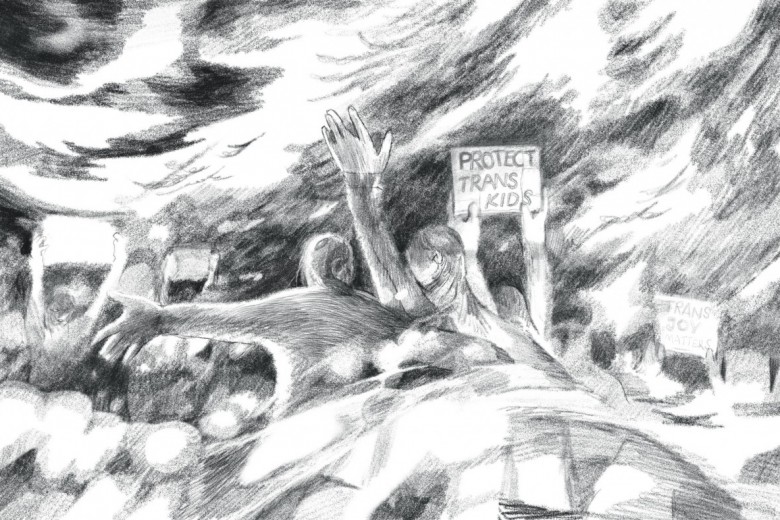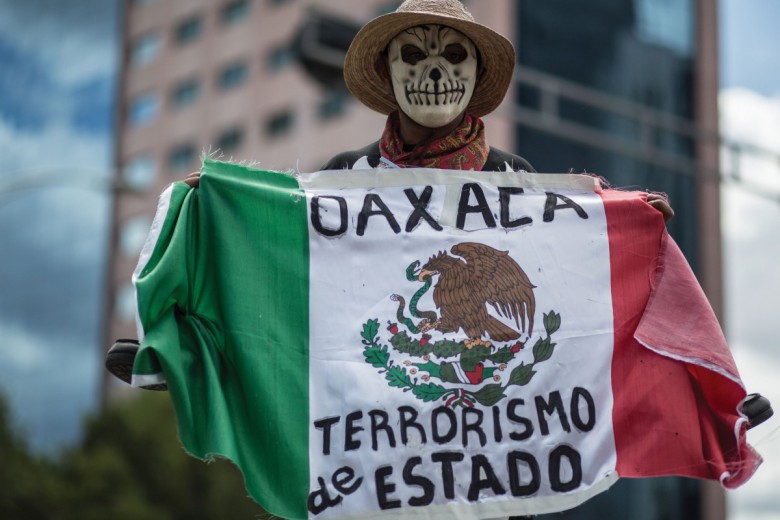
For three decades now, the neoliberal restructuring of post-secondary education has sought to implant market logic and corporate-style management into the academy. The systematic defunding of public education that enables this process has only intensified in recent years with the global financial crisis and the austerity measures imposed in its wake. The resulting transformation of public university systems has brought us corporatized administrations, rising tuition, departmental closures, expanded class sizes, noxious corporate food, offensives against academic workers, and ethically dubious corporate donations.
In its current form, one could argue that the academy produces little that extends our collective social capacities and much that diminishes them: hierarchy, exploitation, debt, individualism, precarious employment, and cynicism. At a time when knowledge is increasingly seen as a commodity to be produced in accordance with the demands of profit, and public education is decried as an unjust fetter on the ruthless pedagogy of the free market, the private sector has turned its attention to the university and is fervently dedicated to its transformation. The state has mostly obliged, with centre-right and centre-left governments across the world taking turns at accelerating this epochal shift in post-secondary education.
And yet, something is stirring in the university. From London to Montreal, from Santiago to Auckland, from Wisconsin to Mexico City, struggles against the commodification of knowledge are proliferating. The neoliberalization of the university has produced its own antagonists, and it is from the ranks of those who stand to lose the most from this transformation – students and academic workers – that the greatest conflicts have emanated.
In 2006, French students rocked the country with massive protests against the Contrat Première Embauche, a piece of legislation aimed at making young workers more precarious and expendable. In 2008, hundreds of thousands of Italian students gave life to the Onda Anomala (Anomalous Wave) movement, pushing back against Silvio Berlusconi’s right-wing education reforms. A year later, students in California marched and occupied against cuts to their public system, once the jewel in the crown of the American public college system. Britain became the scene of massive student mobilizations in November of 2010 after the Conservative-Liberal Democrat coalition increased the tuition cap. Then students across the Middle East and North Africa played a key role in the insurgencies during the Arab Spring of 2011. In the fall of that year, American students, ex-students, and their allies initiated the Occupy Student Debt campaign, including the launch of a student debtors’ pledge of refusal that commits signatories to end repayment of their debts once the petition gathers one million signatures. In Chile in 2011 and 2012, students forced the government’s back against the wall in the fight against their aging two-tier post-secondary education system.
Canada recently became a fresh front in this global confrontation. Students and their allies in Quebec, where the carrés rouges (red squares symbolic of being “squarely in the red”) are multiplying, have brought the education system to a halt for months now in the fight against a proposed tuition increase that has inflamed the province. It is not about more tuition or even about less tuition, says CLASSE, the student organization leading the struggles, but rather about ending tuition. “We now know that equal access to public services is vital to the common good. And access can only be equal if it is free.” The carrè rouge symbol itself traces the recent circulation of university labour, student, and broader social struggles in Canada: originally used during anti-poverty actions in Quebec, then becoming the icon of the 2005 student strike in that province, reappearing during and after the York University strike of 2008-2009 in Ontario (the longest in Canadian history), the little red squares are now teeming in the streets of Montreal, where demonstrations have brought hundreds of thousands out against the tuition hikes and the policing of dissent. A survey of students across Canada by the Globe and Mail in May of 2012 suggested that over 60 per cent were willing to go on strike in their own provinces.
It is too early to tell how powerful these movements will become, but something is clearly stirring in the university. The movements against academic austerity are global, with struggles circulating, recognizing each other, and intensifying. In Auckland, New Zealand, hundreds of students and their allies marched in June of 2012 to protest cuts to education wearing the red square in solidarity with their Quebec counterparts. The first global education strike is being organized for this fall. And while it is impossible to synthesize the perspectives characterizing this new wave of university struggles, there are obvious affinities among them, and proposals for a radical reform of education are becoming difficult to ignore.
First, the financial crisis has focused attention on the growing problem of student debt, as university graduates face diminished prospects amid unemployment and underemployment across the world. Young people are beginning to decry the shameful financial burden imposed on them for wanting nothing more than an education and a decent shot in the labour market. Second, and inextricably related to the first, is the issue of tuition. Post-secondary education, advocates maintain, should be genuinely public and free of cost. University education is much, much more than a personal investment – it produces the collective knowledge and wealth of our societies, at a time when we are in dire need of such wisdom. Third, our universities must provide good jobs for those who make them work. This means reversing the trend whereby university employment is becoming as low-wage and precarious as everywhere else in the economy, and this is true for the whole of the university’s workforce, from its gendered and racialized cleaning staff, administrative assistants, and food workers all the way up the labour hierarchy up to its graduate students and professors. Fourth, these struggles are vindicating the right to the collective production, circulation and use of knowledge, beyond the imposition of intellectual property regimes which stifle learning and advancement. These movements have been experimenting with a range of autonomous education initiatives, including free skools, teach-ins, and horizontal forms of pedagogy. Fifth, these struggles are immediately seen as part of a broader fight against an unprecedented degree of social inequality. These movements are increasingly not limited to the university, but part of a growing global resistance against financial elites and their hypocritical imposition of austerity.
Neoliberalism has failed, and it is time for us to think beyond it. It is, by extension, a special time to be in the university. After decades of relative calm, we are witnessing the forceful emergence of autonomous and collective forms of knowledge and power produced from below, aimed squarely against those bent on transforming our learning environments from above. Within, against, and beyond the neoliberal university lies our own university. Let us occupy, appropriate, and construct it.






